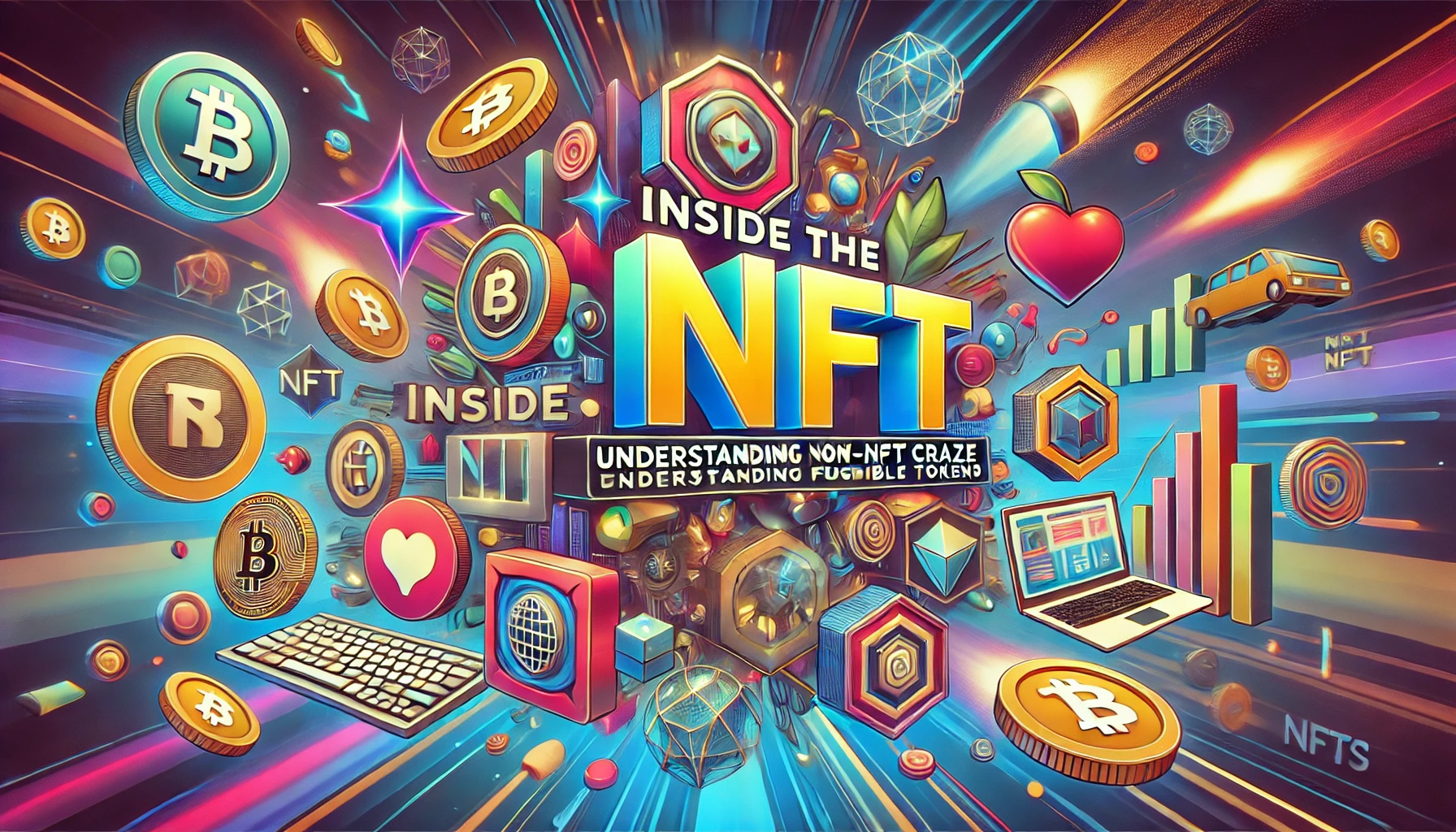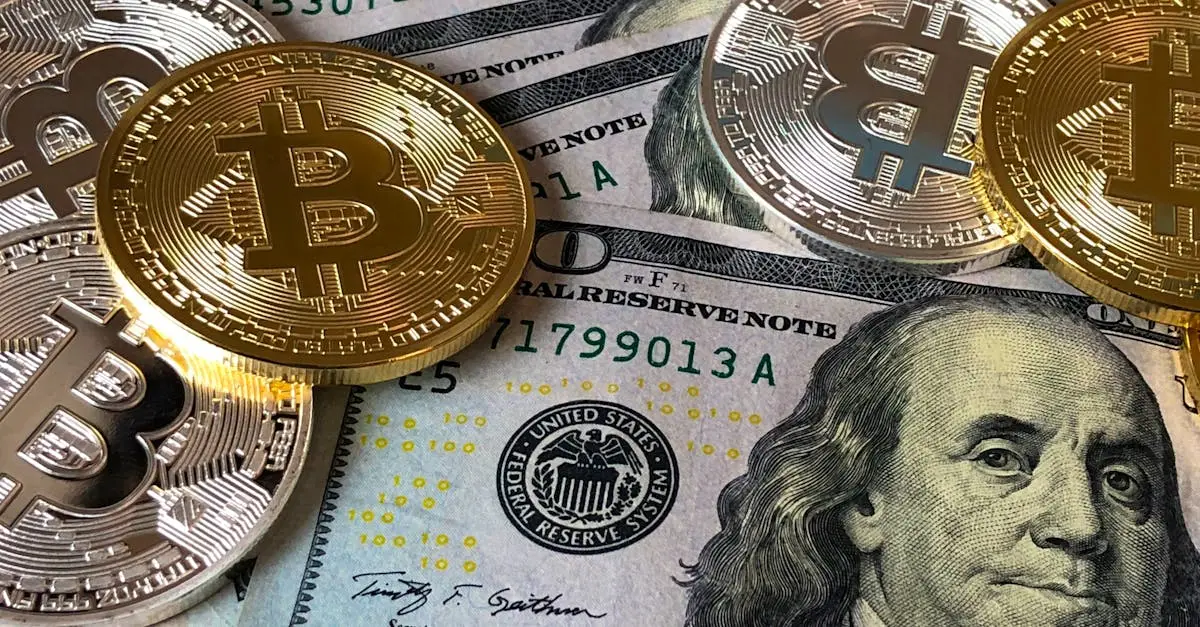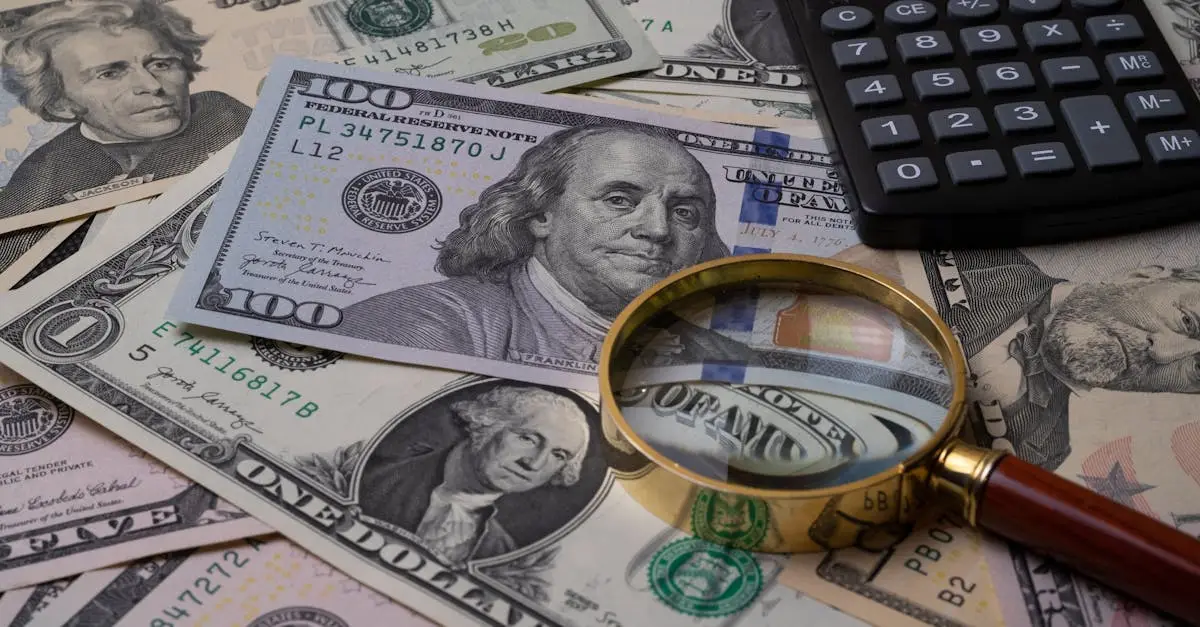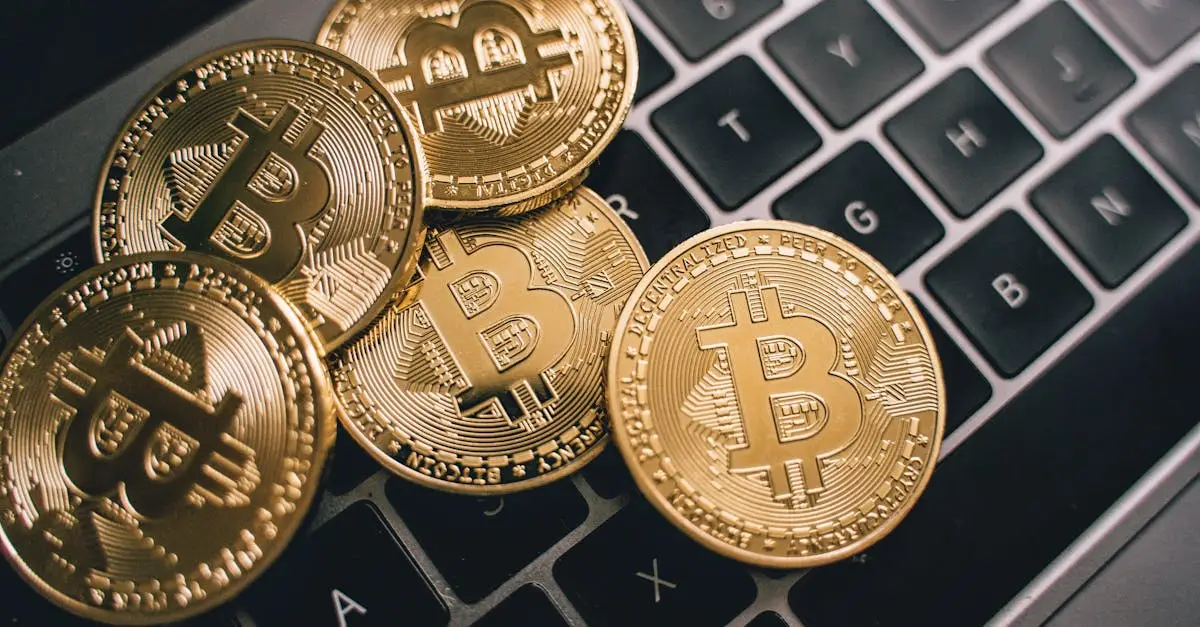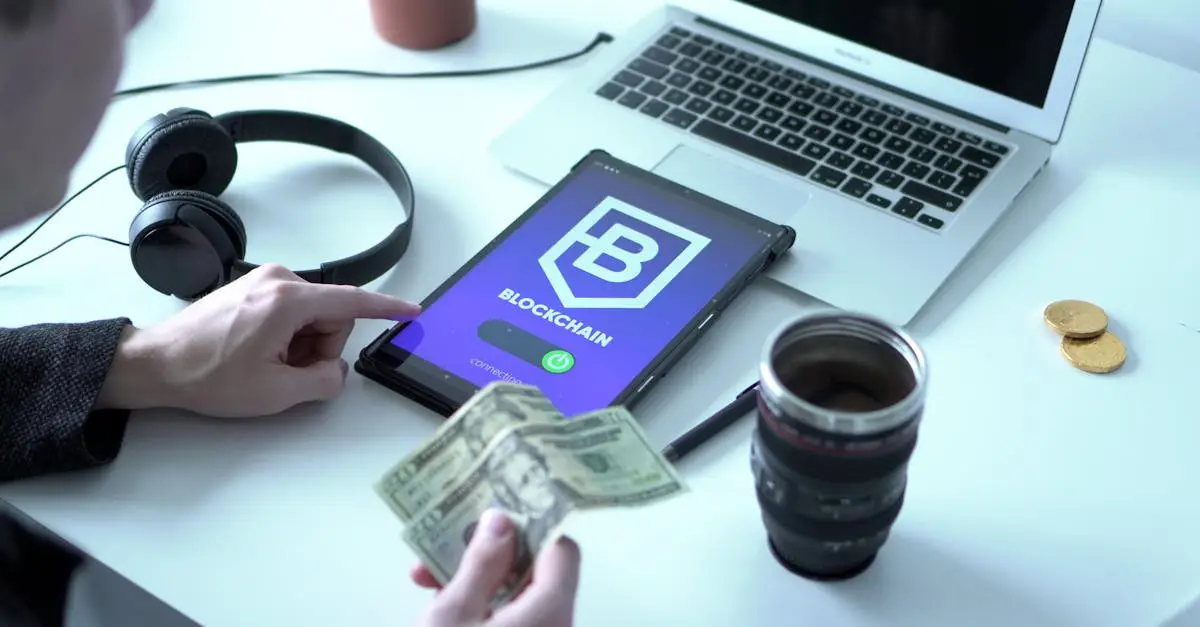In recent years, the rise of NFTs – Non-Fungible Tokens, has taken the digital world by storm, captivating the attention of investors, artists, and tech enthusiasts alike. This article aims to delve deep into the intricacies of this NFTs. craze, providing a comprehensive guide to understanding the phenomenon sweeping across various industries.
First and foremost, it’s essential to grasp the concept of NFTs., which are unique digital assets stored on a blockchain, making them one-of-a-kind and not interchangeable like cryptocurrencies such as Bitcoin or Ethereum. This distinction is what sets NFTs. apart and fuels their appeal in the digital realm, where authenticity and scarcity hold significant value.
As we explore the origins of Non-Fungible Tokens, we uncover a fascinating intersection of technology, art, and economics. Initially gaining traction in the world of digital art, NFTs. have rapidly expanded into music, gaming, collectibles, and even real estate, revolutionizing the way we perceive and exchange value in the virtual space.
The underlying technology behind NFTs. is blockchain, a decentralized and transparent ledger that ensures the provenance and ownership of these unique digital assets. By leveraging blockchain technology, NFTs. offer a secure and immutable way to certify the authenticity and scarcity of digital creations, providing creators and collectors with a new paradigm for exchanging value.
One of the most captivating aspects of NFTs. is their profound impact on the world of digital art. Artists now have a direct channel to showcase and monetize their work, bypassing traditional gatekeepers and establishing a more intimate connection with their audience. This democratization of the art world empowers creators and collectors alike, reshaping the dynamics of the industry.
Moreover, NFTs. have transcended the realm of art, permeating into music, gaming, and collectibles, offering a plethora of new opportunities and use cases. From tokenized albums and concert experiences to unique in-game items and rare digital collectibles, the potential applications of NFTs. continue to expand, sparking creativity and innovation across various sectors.
As with any disruptive technology, NFTs. come with their set of challenges and controversies. From environmental concerns related to the energy consumption of blockchain networks to issues of copyright infringement and market manipulation, the NFTs. space is not without its share of complexities that stakeholders must navigate carefully.
In conclusion, understanding Non-Fungible Tokens is not merely about unraveling a technological trend but delving into a paradigm shift in how we perceive and exchange value in the digital age. By exploring the nuances of NFTs., we can gain valuable insights into the opportunities, risks, and implications that this transformative technology presents, shaping the future of the digital economy.
For further reading on this topic, check out these links: CoinDesk – NFTs Explained and Financial Times – The NFT Market Boom.
Introduction to NFTs: A Beginner’s Guide
Understanding NFTs can be essential for investors looking to explore the world of digital assets. Let’s delve into the basics of Non-Fungible Tokens (NFTs) to provide you with a solid foundation.
NFTs Explained: What are Non-Fungible Tokens?
Non-Fungible Tokens, or NFTs, are unique digital assets that represent ownership or proof of authenticity of a particular item or piece of content. Unlike cryptocurrencies such as Bitcoin or Ethereum, which are fungible and can be exchanged on a one-to-one basis, NFTs are indivisible and one-of-a-kind.
The Rise of NFTs in the Digital Art World
One of the most popular use cases for NFTs is in the digital art world. Artists can create digital artworks or collectibles and tokenize them as NFTs, allowing for ownership rights to be easily transferred and proven on the blockchain. This has revolutionized the way art is bought, sold, and collected.
Investing in NFTs: Opportunities and Considerations
As an investor, it’s crucial to understand the opportunities and considerations when it comes to NFTs. While some NFTs have sold for millions of dollars, it’s important to research the market, the underlying asset, and the platform where the NFT is being sold before making any investment decisions.
Future Implications of NFTs in Various Industries
Looking ahead, the impact of NFTs is expected to expand beyond the art world into industries such as gaming, music, real estate, and more. The ability to prove ownership and authenticity in a digital format has the potential to revolutionize many sectors, opening up new opportunities for creators and investors alike.
What Makes NFTs Unique in the Digital World?
NFTs have been making waves in the digital world, revolutionizing how we perceive and own digital assets. So, what sets NFTs apart from other forms of digital assets?
NFTs stand for Non-Fungible Tokens, which means each token is unique and cannot be replaced with something else. This uniqueness is what distinguishes NFTs from cryptocurrencies like Bitcoin or Ethereum, where each token is interchangeable for another of the same value.
One key aspect that makes NFTs unique is their ability to provide proof of ownership and provenance for digital assets. Through blockchain technology, NFTs offer a transparent and secure way to verify the authenticity and ownership of digital collectibles, artworks, or any other virtual item.
Additionally, NFTs have opened up new opportunities for creators and artists to monetize their work. By tokenizing digital assets as NFTs, creators can sell and license their work in a way that was not possible before, enabling them to reach a global audience and receive direct compensation for their creations.
Furthermore, the decentralized nature of NFTs allows for peer-to-peer transactions without the need for intermediaries, reducing transaction costs and increasing efficiency in the digital marketplace. This direct interaction between creators and collectors fosters a closer relationship and eliminates the barriers that traditional systems impose.
In conclusion, the unique characteristics of NFTs make them a valuable addition to the digital world, offering new possibilities for ownership, authenticity verification, and monetization of digital assets. As the NFT market continues to evolve, it presents exciting opportunities for investors and creators alike.
Exploring the Origins of Non-Fungible Tokens
Non-Fungible Tokens, or NFTs, have rapidly gained attention in the digital asset space. But where did this phenomenon start? The concept of NFTs first appeared in 2014 when Kevin McCoy, an artist, created the first NFT on the Ethereum blockchain. This paved the way for a new era in digital ownership, where unique digital assets could be bought, sold, and traded securely using blockchain technology.
The real breakthrough for NFTs came in 2017 with the launch of CryptoKitties, a blockchain-based virtual game that allowed players to buy, breed, and trade digital cats. This innovative application of NFTs showcased the potential for unique digital assets in gaming and collectibles. CryptoKitties became immensely popular and drew attention to the concept of NFTs beyond the cryptocurrency community.
As the NFT market continued to grow, artists and creators saw an opportunity to monetize their work through digital art and collectibles. Platforms like SuperRare and Rarible emerged, offering artists a way to tokenize and sell their creations as NFTs. This led to a surge in NFT artwork, music, and other digital collectibles, creating a new market for digital assets.
Today, NFTs have expanded beyond art and collectibles into industries like real estate, gaming, and sports. Companies are exploring the potential of NFTs for ticketing, digital identities, and even virtual land ownership. The versatility of NFTs in representing ownership of unique assets has opened up a world of possibilities for investors and enthusiasts alike.
The Role of Blockchain Technology in NFTs
When it comes to the fascinating world of NFTs, blockchain technology plays a crucial role in ensuring the authenticity, ownership, and uniqueness of these digital assets.
Blockchain, which is a decentralized and secure digital ledger, provides the foundation for NFTs by creating a transparent and tamper-proof record of ownership for each token.
One of the key benefits of using blockchain in the realm of NFTs is the ability to verify the provenance of a digital asset, allowing investors to confidently buy, sell, and trade these unique tokens.
Furthermore, blockchain technology enables smart contracts to be embedded within NFTs, automating the execution of transactions and ensuring that the terms of the sale are met without the need for intermediaries.
By leveraging blockchain technology, the world of NFTs continues to innovate and expand, offering new opportunities for investors to participate in this exciting digital marketplace.
How NFTs Are Revolutionizing Digital Art
With the rise of blockchain technology, NFTs have emerged as a game-changer in the world of digital art. Non-fungible tokens are unique digital assets that represent ownership of a particular piece of art, giving artists the opportunity to monetize their work in a whole new way.
One of the key ways in which NFTs are revolutionizing digital art is by solving the issue of provenance. Through blockchain technology, every transaction involving an NFT is recorded on a secure and transparent digital ledger, ensuring the authenticity and ownership history of the artwork. This not only creates a sense of scarcity and exclusivity but also provides a level of trust and security that was previously lacking in the digital art world.
Furthermore, NFTs are enabling artists to receive royalties every time their artwork is sold to a new buyer. Smart contracts embedded in the NFTs automatically execute these royalty payments, eliminating the need for intermediaries and ensuring that artists receive fair compensation for the increasing value of their work over time.
The introduction of NFTs has also democratized the art world, making it more accessible to a global audience. Artists no longer need to rely solely on traditional galleries or auction houses to showcase and sell their work. Instead, they can leverage online marketplaces and platforms that support the creation and trading of NFTs, reaching a broader base of collectors and art enthusiasts.
In conclusion, NFTs are not only revolutionizing the way digital art is created, bought, and sold but also reshaping the entire art ecosystem. As blockchain technology continues to evolve, the potential for NFTs to transform other industries beyond art is limitless, making it an exciting area for investors to explore.
NFTs in Various Industries
While Non-Fungible Tokens (NFTs) have seen tremendous success in the art world, their potential goes far beyond that. Industries such as music, gaming, and collectibles are also beginning to explore the benefits and possibilities that NFTs bring to the table.
Revolutionizing the Music Industry
In the music industry, NFTs are being used to create unique opportunities for artists and fans alike. Through NFTs, musicians can release limited edition albums, exclusive songs, or even concert tickets that come with special perks. This direct engagement between artists and fans not only fosters a stronger connection but also opens up new revenue streams for musicians.
Innovating the Gaming Sector
Gaming companies are incorporating NFTs to revolutionize in-game assets and ownership. Players can now truly own rare items, characters, or skins as NFTs, enabling them to trade or sell these digital assets outside of the game environment. This new paradigm not only adds value to the gaming experience but also creates a lucrative market for gamers.
Transforming the Collectibles Market
The world of collectibles, whether physical or digital, is witnessing a transformation through NFTs. Collectors can now verify the authenticity and ownership of their items through blockchain technology, making fraud and forgery almost impossible. This increased trust and traceability are reshaping how collectibles are bought, sold, and traded in the market.
Understanding the Concept of Fungibility in NFTs
When delving into the world of NFTs, one crucial concept to grasp is fungibility. Unlike traditional cryptocurrencies like Bitcoin or Ethereum, which are fungible, NFTs operate on a non-fungible basis.
So, what does it mean for an asset to be non-fungible? In simple terms, non-fungibility refers to the uniqueness and indivisibility of a particular asset. Each NFT is one-of-a-kind and cannot be exchanged on a one-to-one basis with another NFT, unlike fungible assets such as traditional currencies or cryptocurrencies.
Understanding the non-fungible nature of NFTs is essential for investors looking to navigate this rapidly growing market. It highlights the scarcity and uniqueness that underpin the value of these digital assets, setting them apart from fungible counterparts.
Moreover, the concept of fungibility raises interesting questions regarding ownership and provenance in the digital realm. With each NFT possessing a unique history and digital signature, verifying authenticity and ownership becomes a key consideration for both creators and buyers in the NFT space.
Challenges and Controversies Surrounding NFTs
As the world of blockchain technology continues to evolve, NFTs have emerged as a hot topic in the digital asset space. However, with their rise in popularity, several challenges and controversies have surfaced that investors should be aware of.
NFTs are unique digital assets that represent ownership of a specific item or piece of content, such as artwork, music, videos, or even tweets. One of the primary challenges surrounding NFTs is their environmental impact. The process of minting NFTs requires significant amounts of energy, leading to concerns about the carbon footprint of blockchain technology.
Another key challenge facing NFTs is the issue of copyright infringement. Due to the decentralized nature of blockchain, verifying the originality and authenticity of NFTs can be challenging. This has resulted in controversies where artists have seen their work tokenized and sold without their consent.
Moreover, the volatility of the NFTs market poses a significant risk for investors. The value of NFTs can fluctuate drastically, making it a high-risk investment. This volatility has led to debates about the long-term sustainability of the NFTs market and its potential impact on the broader digital asset ecosystem.
Regulatory uncertainty is another pressing issue surrounding NFTs. As governments scramble to keep up with the rapid growth of the NFT market, there is a lack of clear guidelines and regulations governing these digital assets. This lack of oversight can leave investors vulnerable to fraud and manipulation.
In conclusion, while NFTs offer exciting opportunities for digital ownership and investment, they also come with a host of challenges and controversies that investors must navigate. Understanding these issues is crucial for making informed decisions in the fast-paced world of blockchain and digital assets.
Investing in NFTs: Opportunities and Risks
With the rise of digital assets, NFTs have gained significant attention in the investment world. These unique tokens represent ownership of digital content such as art, music, and collectibles.
Opportunities
- Diversification: Investing in NFTs can provide an opportunity to diversify your investment portfolio beyond traditional assets like stocks and bonds.
- High Potential Returns: Some NFTs have seen exponential growth in value, offering the potential for high returns on investment.
- Early Adoption Advantage: Being an early adopter in the NFT space can offer unique opportunities to acquire valuable assets before they become mainstream.
Risks
- Market Volatility: The NFT market is known for its high volatility, meaning that prices can fluctuate rapidly, leading to potential losses.
- Lack of Regulation: The NFT market is still relatively unregulated, which can expose investors to a higher risk of fraud or scams.
- Technology Risks: Issues such as hacking, smart contract vulnerabilities, and storage risks can pose a threat to NFT investments.
As with any investment, conducting thorough research and understanding both the opportunities and risks associated with NFTs is crucial for making informed investment decisions in this emerging market.
Regulatory Landscape: Navigating the Legality of NFTs
As NFTs have taken the digital world by storm, offering a new way to buy, sell, and own digital assets. However, along with their surge in popularity comes a complex regulatory landscape that investors must navigate.
Understanding the legality of NFTs is crucial for investors looking to participate in this market. Unlike traditional assets, such as stocks or real estate, the regulatory framework around NFTs is still evolving and can vary significantly from one jurisdiction to another.
One of the key challenges in the legal treatment of NFTs is determining how they should be classified. Are they considered securities, commodities, or simply digital collectibles? This classification can have significant implications for how NFTs are regulated and taxed.
Another important aspect of the regulatory landscape for NFTs is ensuring compliance with anti-money laundering (AML) and know your customer (KYC) regulations. Due to their digital nature, NFTs have the potential to be used for illicit activities, making it imperative for investors to follow strict AML and KYC procedures.
Furthermore, intellectual property rights also come into play when dealing with NFTs. Ensuring that the ownership and rights associated with a particular NFT are legitimate is essential to avoid legal disputes down the line.
In conclusion, navigating the legality of NFTs requires a thorough understanding of the regulatory environment, classification, compliance with AML and KYC regulations, and respect for intellectual property rights. As the market for NFTs continues to grow, staying informed and compliant with relevant laws and regulations will be key for investors looking to participate in this innovative space.
Future Trends and Implications of Non-Fungible Tokens
In the world of digital assets, NFTs have emerged as a revolutionary innovation with far-reaching implications for various industries. As we look ahead to the future, it is essential for investors to understand the potential trends and impact of non-fungible tokens on the marketplace.
The Rise of Digital Art: One of the most significant trends in the NFTs space is the rise of digital art as a valuable asset class. Artists are now able to tokenize their work, allowing for greater ownership rights and unique digital scarcity. This trend is expected to continue growing, with digital art becoming a mainstream investment opportunity.
Expansion into Real Estate: Another key implication of NFTs is their potential to disrupt the real estate market. Through tokenization, properties can be divided into digital shares, making real estate investment more accessible to a broader range of investors. This trend is likely to reshape how real estate transactions are conducted in the future.
Integration in the Gaming Industry: The gaming industry is also set to be transformed by NFTs. In-game assets and collectibles can now be tokenized, allowing players to truly own and trade digital items. This trend opens up new revenue streams for game developers and enhances the gaming experience for players.
Impact on Intellectual Property Rights: As NFTs gain popularity, questions surrounding intellectual property rights and ownership are becoming increasingly important. The ability to tokenize creative works raises complex legal issues that will need to be addressed to ensure fair compensation for creators and protection of their intellectual property.
Regulatory Challenges and Opportunities: With the rapid growth of NFTs, regulatory frameworks are struggling to keep up. Investors must stay informed about the evolving regulatory landscape to navigate potential risks and opportunities in the market. Regulatory clarity will be crucial for the long-term sustainability of the NFTs ecosystem.
Frequently Asked Questions
What are NFTs and how are they different from traditional cryptocurrencies?
NFTs are unique digital assets that represent ownership of a specific item or piece of content, using blockchain technology to certify their authenticity and scarcity. Unlike traditional cryptocurrencies like Bitcoin or Ethereum, NFTs are indivisible and cannot be exchanged on a like-for-like basis. Each NFT has distinct attributes that set them apart from one another.
What are the future trends in the market for NFTs?
The future of NFTs is promising, with ongoing trends indicating a growing interest from various industries beyond art and collectibles. Expect to see a surge in tokenization of real-world assets, use of NFTs in gaming and virtual worlds, and innovative applications in digital identity and decentralized finance (DeFi).
How do NFTs impact the investment landscape?
NFTs possess the potential to revolutionize investment practices by enabling fractional ownership of high-value assets, increased liquidity through asset tokenization, and the creation of new revenue streams for content creators and investors. However, risks such as price volatility and regulatory uncertainties should be carefully evaluated.
What are the implications of NFTs for intellectual property rights?
The rise of NFTs has raised significant questions regarding intellectual property rights, especially concerning issues like ownership, licensing, and resale rights of digital assets. Smart contracts embedded in NFTs can automate royalty payments and ensure artists receive a portion of secondary market sales, potentially reshaping the IP landscape.
Sources:
– Smith, J. (2022). The Future of NFTs: Trends, Opportunities, and Risks. Investopedia. https://www.investopedia.com/the-future-of-nfts-5199223
– White, A. (2021). Non-Fungible Tokens: A Comprehensive Guide. Forbes. https://www.forbes.com/non-fungible-tokens-guide
NFTs have undeniably taken the digital world by storm, revolutionizing the way we perceive and interact with digital assets. As we reflect on the various aspects covered in the text “Inside the NFT Craze: Understanding Non-Fungible Tokens,” it becomes evident that these unique tokens are not just a passing trend but a significant development with far-reaching implications.
The journey through the beginner’s guide to NFTs shed light on the fundamental concepts that underpin these tokens, laying the groundwork for understanding their significance in the digital ecosystem. The exploration of what makes NFTs unique revealed how these tokens enable true ownership and authenticity in a digital realm plagued by copies and duplicates.
Delving into the origins of NFTs provided insights into the evolution of this technology and its roots in blockchain innovation. The role of blockchain in powering NFTs not only ensures security and transparency but also opens up a plethora of possibilities for various industries beyond art.
One cannot overlook the transformative impact of NFTs on the art world, where digital artists are now able to monetize their work and connect directly with their audience. The extension of NFTs into music, gaming, and collectibles signals a paradigm shift in how we approach and engage with digital assets across diverse sectors.
Understanding the concept of fungibility is crucial in grasping the essence of NFTs and why they hold such value in a predominantly fungible digital landscape. However, as with any novel technology, challenges and controversies have emerged, prompting discussions around issues of copyright, environmental impact, and market speculation.
For investors, the landscape of NFTs presents both opportunities and risks, requiring a nuanced approach to navigate this nascent market successfully. Regulatory frameworks are gradually taking shape to address the legality of NFTs and provide a stable foundation for their proliferation.
In conclusion, the future trends and implications of non-fungible tokens are vast and promising, with the potential to reshape how we create, exchange, and value digital assets. As NFTs continue to permeate various sectors and spark innovation, staying informed and adaptable will be key to harnessing the full potential of this groundbreaking technology.

I am Ethan Grant, a finance and cryptocurrency enthusiast with over a decade of involvement in the financial sector. My journey began with a passion for investment strategies, market analysis, and digital assets. Since then, I have dedicated my time to helping others navigate the complexities of the financial world. My insights are based on practical knowledge and a deep understanding of market trends, which allows me to offer valuable and reliable guidance.
Over the years, I have had the opportunity to work with several investment firms, which has further fueled my passion for cryptocurrencies and blockchain technology. I believe that digital assets have the power to promote financial independence, and today, I share my experiences and knowledge through articles, market analyses, and investment tips on Cryptofinanceinsider.
As an author, my commitment is to inform in the best way possible about the world of finance. I enjoy addressing topics in a straightforward and honest manner, which I believe resonates with both beginners and experienced investors. My goal is to make complex financial concepts more accessible to everyone.

